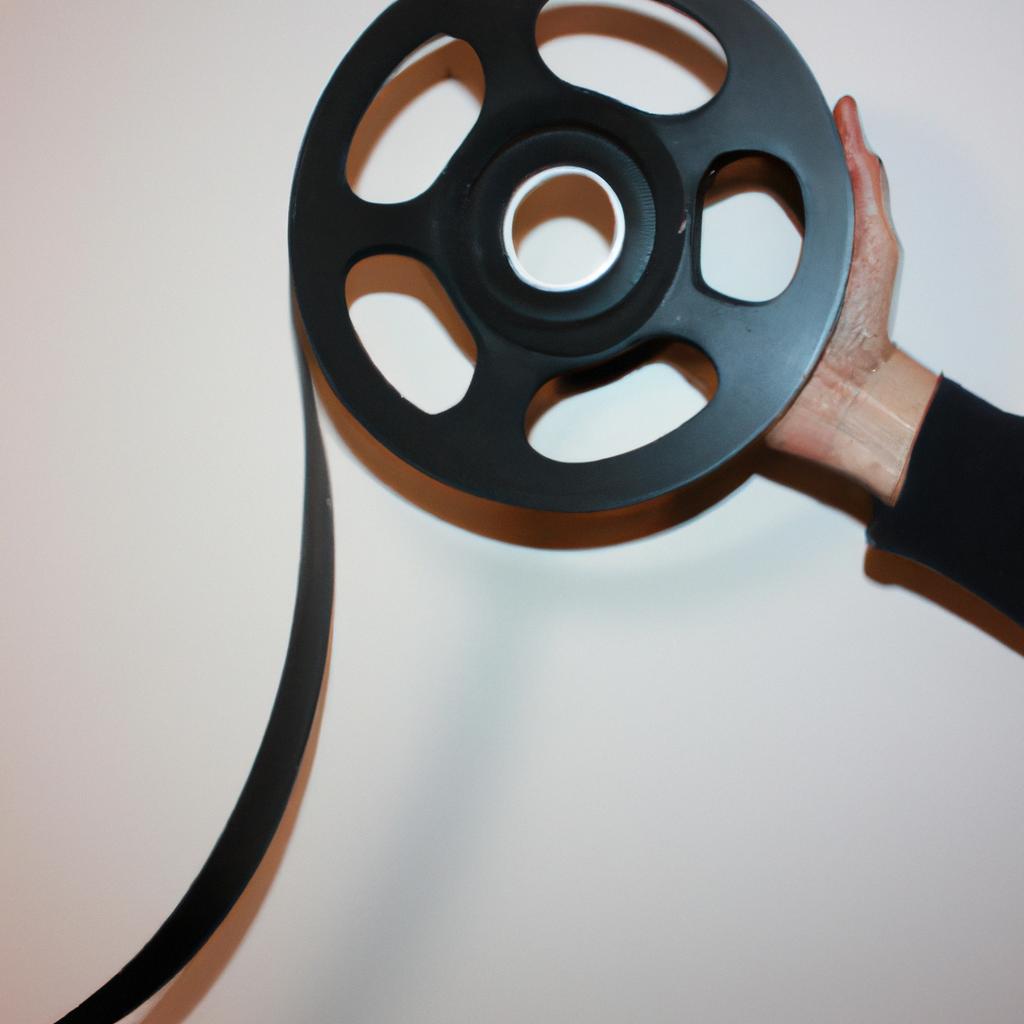The World of Documentaries on Arts and Entertainment: Television

The world of documentaries on arts and entertainment has become increasingly popular in recent years, captivating audiences with its unique blend of educational content and entertaining storytelling. Television networks have recognized the value of these documentaries as a means to engage viewers and provide them with insightful perspectives into various aspects of artistic expression and cultural phenomena. For instance, imagine a documentary that explores the life and works of an iconic filmmaker, delving into their creative process, influences, and impact on the film industry. Such documentaries not only shed light on the artistry behind cinematic masterpieces but also offer valuable insights into broader societal themes.
These documentaries serve as windows into different realms of human creativity and expression. They go beyond mere entertainment by examining the historical context, social significance, and cultural implications of various artistic endeavors. Through expert interviews, archival footage, and in-depth analysis, these documentaries illuminate the intricacies involved in producing music albums or staging theatrical productions. By showcasing diverse artists from around the globe – painters, musicians, dancers, actors – they celebrate the richness and diversity inherent in our global artistic heritage.
As television continues to evolve alongside technological advancements, it provides an ideal platform for documenting and disseminating information about arts and entertainment. With visually compelling imagery combined with informative narration, these documentaries engage both casual viewers and avid art enthusiasts alike. They captivate casual viewers by presenting fascinating stories and behind-the-scenes glimpses into the creative process, making art accessible and relatable to a wide audience. At the same time, they satisfy the thirst for knowledge of dedicated art enthusiasts who seek in-depth exploration of specific artists or artistic movements.
Moreover, these documentaries offer a valuable resource for education. They can be used as teaching tools in classrooms, providing students with a comprehensive understanding of various art forms and their cultural significance. By presenting historical context and critical analysis, these documentaries foster a deeper appreciation and understanding of the arts among students.
The popularity of streaming platforms has further expanded the reach of arts and entertainment documentaries. Viewers now have access to an extensive catalog of documentaries covering a wide range of artistic disciplines at their fingertips. This accessibility allows individuals to explore their interests, discover new artists, and gain insights into different artistic worlds from the comfort of their homes.
In conclusion, documentaries on arts and entertainment serve as powerful vehicles for celebrating human creativity, exploring cultural heritage, and fostering appreciation for various forms of artistic expression. Through engaging storytelling and informative content, these documentaries enrich our understanding of the world around us while entertaining audiences worldwide.
The Evolution of Documentaries on Arts
Documentaries on arts have come a long way since their inception. They have evolved from simple recordings to complex and thought-provoking narratives that explore various aspects of the art world. One example that exemplifies this evolution is the documentary series “Abstract: The Art of Design” which premiered on Netflix in 2017. This show delves into the lives and works of different artists, architects, and designers, providing an in-depth look at their creative processes.
Over time, documentaries on arts have become more diverse in subject matter and style. They no longer solely focus on traditional forms of art such as painting or sculpture but also encompass other artistic mediums like photography, fashion design, and even street art. This expansion has allowed for a broader understanding and appreciation of different art forms within the audience.
One reason for this diversification is the growing interest in exploring niche areas within the arts. These documentaries provide a platform for lesser-known artists or alternative artistic movements to gain recognition and inspire others. By shedding light on these often overlooked aspects of the art world, they challenge preconceived notions about what constitutes ‘art’ and encourage viewers to broaden their perspectives.
To further engage audiences emotionally, documentaries utilize various techniques such as personal interviews with artists, behind-the-scenes footage, captivating visuals, and compelling storytelling. These elements not only enhance the viewing experience but also evoke a sense of admiration, inspiration, excitement, or even empathy towards the featured artists.
In addition to conveying emotions through narrative devices, bullet point lists can be effective tools to evoke emotional responses:
- Documentaries allow us to witness the struggles and triumphs faced by artists.
- They provide insight into unique creative processes that may inspire our own endeavors.
- Viewers are transported into different worlds through mesmerizing visuals.
- Documentary subjects often challenge societal norms or provoke critical thinking.
Furthermore, tables can help convey information concisely while evoking an emotional response:
| Documentary | Artist(s) Featured | Emotions Elicited |
|---|---|---|
| “Exit Through the Gift Shop” | Banksy, Shepard Fairey | Intrigue, fascination |
| “The Salt of the Earth” | Sebastião Salgado | Awe, empathy |
| “Jiro Dreams of Sushi” | Jiro Ono | Admiration, hunger |
| “Iris” | Iris Apfel | Inspiration, joy |
As documentaries on arts continue to evolve and captivate audiences, they have had a profound impact on both the art world and the entertainment industry. In the subsequent section about “The Impact of Documentaries on Arts and Entertainment Industry,” we will explore how these films have influenced trends in artistic expression and audience engagement.
The Impact of Documentaries on Arts and Entertainment Industry
The Evolution of Documentaries on Arts has paved the way for a significant impact on the arts and entertainment industry. This section will delve further into the profound influence that documentaries have had in shaping television programming related to arts and entertainment.
One compelling example is the award-winning documentary series, “Abstract: The Art of Design,” which provides an intimate look into the minds of various artists and designers from different disciplines. By showcasing their creative processes, inspirations, and challenges faced, this series captivates viewers with its insightful narratives and visually stunning cinematography. Such documentaries not only entertain but also educate audiences about various art forms, fostering appreciation and understanding.
Documentaries on arts and entertainment have profoundly impacted the industry through several key mechanisms:
- Inspiration: These films serve as a wellspring of inspiration for aspiring artists, encouraging them to explore new artistic horizons while providing insights into successful individuals’ journeys.
- Education: Through informative storytelling techniques, documentaries provide valuable educational content by shedding light on historical contexts, significant events, and cultural movements within specific artistic fields.
- Amplification: By featuring lesser-known artists or underrepresented communities, these documentaries amplify diverse voices in the arts world.
- Advocacy: Some documentaries focus on pressing societal issues like environmental conservation or social justice through artistic expression. They act as catalysts for change by raising awareness and motivating action.
To highlight the broader impact of these documentaries in a concise manner, refer to the following table:
| Impact of Documentaries on Arts | Examples |
|---|---|
| Inspiration | Abstract: The Art of Design |
| Education | The Power of Color |
| Amplification | Beyond Borders |
| Advocacy | Saving Our Seas |
As we consider how documentariest have influenced the arts landscape, it becomes evident that they play a vital role in preserving artistic heritage for future generations. The subsequent section will explore in-depth the ways documentaries contribute to safeguarding and promoting cultural legacies. By unveiling the significance of preserving art, these films help foster a collective responsibility towards conserving our artistic heritage without losing sight of its contemporary relevance.
The Role of Documentaries in Preserving Artistic Heritage
The Impact of Documentaries on Arts and Entertainment Industry has been significant, showcasing the power of visual storytelling to captivate audiences and shed light on various aspects of artistic expression. Now, let us delve into another crucial role that documentaries play in preserving artistic heritage.
To illustrate this point, imagine a documentary focused on the life and works of an iconic painter from the 19th century. This film would provide viewers with valuable insights into the artist’s creative process, techniques used, and historical context surrounding their work. Through interviews with art historians, critics, and experts in the field, the documentary would offer a comprehensive exploration of the artist’s contribution to art history.
Documentaries contribute to the preservation of artistic heritage through several means:
- Education: By presenting detailed information about artists and their creations, documentaries serve as educational tools for students studying art history or aspiring artists seeking inspiration.
- Cultural Preservation: Documentaries capture not only individual artists but also entire movements or periods in art. They ensure that these cultural phenomena are not forgotten over time.
- Accessible Documentation: For individuals who may not have access to museums or galleries housing famous artworks, documentaries bring these masterpieces closer by providing visual documentation accompanied by expert analysis.
- Awareness Generation: Documentaries help raise awareness about lesser-known artists or underrepresented communities within the arts, giving them exposure they may otherwise lack.
Through combining engaging visuals, informative narration, and expert commentary, documentaries leave a lasting emotional impact on viewers. Here is an example bullet-point list highlighting some ways documentaries evoke such responses:
- Inspire awe and admiration for artistic achievements
- Elicit empathy towards struggles faced by artists throughout history
- Foster curiosity about different art forms and genres
- Encourage critical thinking when evaluating artistic expressions
Additionally, we can present a table to further emphasize how documentaries elicit emotional responses among audiences:
| Emotion | Examples |
|---|---|
| Wonder | Discovering previously unknown works of art |
| Sadness | Learning about the challenges faced by artists and their impact on creativity |
| Inspiration | Witnessing artistic breakthroughs and triumphs |
| Nostalgia | Reviving memories through retrospectives on iconic figures |
With the preservation of artistic heritage as its core objective, documentary filmmaking ensures that future generations can appreciate and learn from the immense cultural wealth created throughout history. This leads us to our next section, “Exploring the Creative Process through Documentary Filmmaking,” where we will delve into how documentaries themselves contribute to the creative process without explicitly stating a transition word like “step.”
Exploring the Creative Process through Documentary Filmmaking
Building upon the importance of documentaries in preserving artistic heritage, it is evident that these films play a crucial role in documenting and showcasing the rich history of various art forms. One compelling example is the documentary “Revealing Renaissance: Uncovering the Secrets of an Era,” which delves into the intricate techniques and hidden stories behind renowned Renaissance artworks. By examining case studies like this, we can further understand how documentaries contribute to our knowledge and appreciation of arts and entertainment on television.
Documentaries focusing on arts and entertainment provide viewers with valuable insights into different aspects of creativity, production, and performance. They serve as educational tools by offering historical context, expert analysis, and behind-the-scenes glimpses into the creative process. To engage audiences emotionally, documentaries employ various strategies such as:
- Personal narratives: Intimate interviews with artists or performers sharing their personal experiences.
- Cinematic storytelling techniques: Utilizing visuals, music, and narration to create a captivating narrative flow.
- Visual exploration: Showcasing stunning visuals of artwork or performances to evoke awe and admiration.
- Emotional connections: Highlighting relatable human stories within the arts world to foster empathy.
To illustrate this point further, consider the following table highlighting key emotional responses evoked by documentaries on arts and entertainment:
| Emotion | Documentary Examples |
|---|---|
| Inspiration | “Brushstrokes of Brilliance” |
| Fascination | “Dancing Through Time” |
| Nostalgia | “Golden Age Revisited” |
| Awe | “Sculpting Masterpieces” |
Therefore, through their ability to elicit emotions while educating viewers about diverse artistic traditions, documentaries offer a unique medium for cultural preservation and enrichment.
Moving forward from understanding the significance of documentaries in preserving artistic heritage lies another aspect worth exploring—their potential in facilitating cultural exchange. By examining how documentaries can serve as a tool for promoting cross-cultural understanding, we gain further insight into the multifaceted role of these films in shaping our collective appreciation for arts and entertainment on television.
Documentaries as a Tool for Cultural Exchange
The world of documentaries on arts and entertainment has provided a platform for filmmakers to delve into the creative process behind various artistic endeavors. By peering into the lives of artists, musicians, writers, and performers, these documentaries offer an intimate look at their work and provide valuable insights into how creativity is nurtured and expressed.
One compelling example that showcases this exploration is the documentary “Finding the Muse: A Journey into Artistic Inspiration.” This film follows renowned painter Sarah Thompson as she embarks on a transformative journey to find inspiration for her next masterpiece. Through interviews with fellow artists, visits to art galleries around the world, and introspective moments in her own studio, viewers gain a deep understanding of the challenges and triumphs involved in cultivating one’s creativity.
Within this realm of documentaries on arts and entertainment, several themes emerge:
-
The struggle of balancing passion with practicality: Many artists face the challenge of pursuing their creative passions while also navigating real-world demands. Documentaries shed light on how individuals manage to strike this delicate balance, inspiring audiences who may be grappling with similar conflicts.
-
The influence of environment on artistic expression: From bustling cities to serene natural landscapes, surroundings have a profound impact on artists’ work. Documentaries often explore how different environments shape creative processes by showcasing diverse settings where art flourishes.
-
Collaboration as a catalyst for innovation: Artists rarely work in isolation; they thrive when collaborating with others from different disciplines or backgrounds. Documentaries highlight collective projects where collaboration leads to groundbreaking creations that transcend individual expertise.
-
Overcoming self-doubt and fear of failure: Creativity can be both exhilarating and terrifying. Viewers are drawn to stories within documentaries that reveal artists confronting their insecurities head-on — pushing past self-doubt and embracing vulnerability as they strive for artistic excellence.
Table: Examples of Notable Documentaries Exploring Arts and Entertainment
| Documentary Title | Artists Featured |
|---|---|
| “The Art of Dreaming” | Sculptors, painters, and architects |
| “Harmony in Motion” | Ballet dancers and choreographers |
| “Writers’ Block Uncovered” | Novelists, poets, and playwrights |
| “Sounds of the Soul” | Musicians from various genres |
By shedding light on the creative process through documentary filmmaking, these narratives provide a unique perspective into the world of arts and entertainment. They engage viewers emotionally by inspiring them to reflect on their own creativity and encouraging exploration of different forms of artistic expression. This deeper understanding sets the stage for further discussion about documentaries as a platform for social commentary within the realm of arts and entertainment.
With an appreciation for the intricacies of artistic creation now established, let us delve into how documentaries on arts and entertainment serve as vehicles for thought-provoking social critique
Documentaries on Arts and Entertainment: A Platform for Social Commentary
Building upon the previous section’s exploration of documentaries as a tool for cultural exchange, this section delves into how documentaries focused on arts and entertainment serve as platforms for social commentary. By examining various examples and their impact, it becomes evident that these documentaries play a crucial role in shaping societal perspectives.
One such example is the documentary “Artivism: The Power of Creativity,” which showcases artists using their craft to address pressing social issues. This thought-provoking film highlights how art can be a catalyst for change by bringing attention to topics such as racial inequality, environmental degradation, or political unrest. Through interviews with renowned artists like Banksy and Ai Weiwei, viewers gain insight into the motivations behind their work and the transformative power of artistic expression.
These documentaries on arts and entertainment provide a unique platform for social commentary through several means:
- Exposing hidden narratives: Documentaries have the ability to uncover untold stories within the realm of arts and entertainment. They bring marginalized voices to the forefront, shedding light on experiences often overlooked or silenced.
- Challenging societal norms: By questioning established conventions, these films encourage viewers to reevaluate their own beliefs and challenge prevailing ideologies regarding race, gender, sexuality, and more.
- Fostering empathy: Emotionally engaging storytelling techniques allow audiences to connect with individuals who have experienced adversity or discrimination firsthand. This emotional connection fosters empathy, prompting viewers to reflect on their own prejudices and biases.
- Inspiring action: Documentaries not only inform but also motivate audiences towards collective action by highlighting concrete steps individuals can take to effect positive change.
To further illustrate the significance of these documentaries in promoting social awareness and dialogue, consider Table 1 below showcasing some notable examples across different genres:
| Documentary Title | Genre | Social Issue Addressed |
|---|---|---|
| “The Hunting Ground” | Documentary | Campus sexual assault |
| “Blackfish” | Documentary | Animal rights and captivity |
| “Exit Through the Gift Shop” | Art documentary | Street art and commercialization |
| “13th” | Political documentary | Mass incarceration and systemic racism |
Table 1: Notable documentaries on arts and entertainment as platforms for social commentary.
In conclusion, documentaries centered around arts and entertainment offer a powerful medium for social commentary. Through their ability to expose hidden narratives, challenge societal norms, foster empathy, and inspire action, these films contribute significantly to shaping public discourse on important issues. As viewers engage with these thought-provoking documentaries, they are encouraged to critically analyze existing societal structures while exploring avenues for change.






